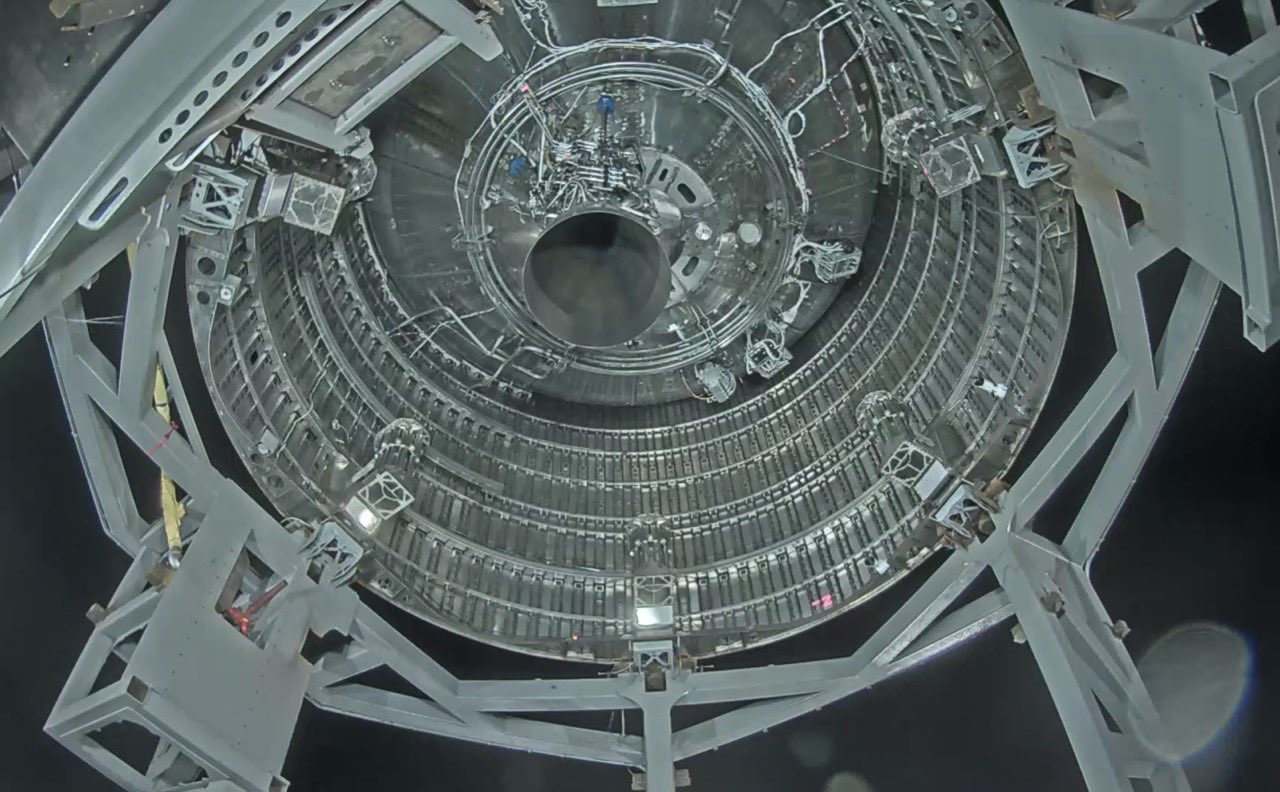
A new photo shows just how big SpaceX's Starship Mars-colonizing vehicle will be.
SpaceX founder and CEO Elon Musk tweeted an image Sunday (May 3) looking up at the belly of the latest Starship prototype, the SN4, which is on the test stand at the company's South Texas site. The shot shows the SN4's single Raptor engine, looking extremely lonely in the center of a 30-foot-wide (9 meters) expanse.
"SN4 fire soon. Raptor looks so smōl," Musk wrote in the tweet.
Related: SpaceX's Starship and Super Heavy rocket in pictures
SN4 🔥 soon. Raptor looks so smōl. pic.twitter.com/WcMdo6wAtjMay 4, 2020
As Musk noted, the Raptor will get a workout soon, in the form of a "static fire" test, during which the engine will blaze while the rocket is tied down. Indeed, SpaceX aimed to perform the engine test Sunday night but called it off because the Raptor's liquid methane propellant got too warm, Musk explained in another tweet. The next attempt will come soon, likely sometime today (May 4).
If the static fire goes well, SpaceX will start gearing up for an uncrewed test flight with the SN4, taking the prototype about 500 feet (150 m) into the South Texas skies.
Future prototypes will go much higher. For instance, the SN5 will have three Raptors, and SpaceX wants to send that vehicle about 12 miles (20 kilometers) up, Musk has said.
Get the Space.com Newsletter
Breaking space news, the latest updates on rocket launches, skywatching events and more!
The final Starship will be more powerful still, boasting six engines. The 165-foot-tall (50 m), 100-passenger craft will be capable of blasting itself off the surface of the moon and Mars, Musk has said.
But Starship will need help breaking free of our planet's gravitational grip. So it will launch off Earth atop a giant rocket called Super Heavy, which will be powered by dozens of Raptors. (In earlier designs, Super Heavy could boast 37 engines. But Musk recently tweeted that the rocket will be powered by "only" 31 Raptors.)
Both Super Heavy and Starship will be fully reusable, potentially slashing the cost of spaceflight enough to enable the colonization of Mars, Musk has said. And the Red Planet isn't the pair's only exploration target; the moon is also in play. For example, NASA just awarded SpaceX a contract to develop Starship as a lunar lander, to ferry astronauts to the moon's surface for the agency's Artemis program, which aims to land humans in 2024.
Two other industry groups got similar human-lander contracts: Alabama-based Dynetics and a team headed by Blue Origin, the spaceflight company led by Amazon.com founder Jeff Bezos. Not all of the privately developed landers will necessarily end up flying NASA astronauts; the agency will assess the designs and decide which ones to continue funding. Ultimately, NASA will choose from among the vehicles that make it through to operational flight, purchasing landing missions as transportation services.
- SpaceX: Facts about Elon Musk's private spaceflight company
- Welders wanted: SpaceX is hiring to ramp up production of stainless steel Starship
- How living on Mars could challenge colonists (infographic)
Mike Wall is the author of "Out There" (Grand Central Publishing, 2018; illustrated by Karl Tate), a book about the search for alien life. Follow him on Twitter @michaeldwall. Follow us on Twitter @Spacedotcom or Facebook.
OFFER: Save 45% on 'All About Space' 'How it Works' and 'All About History'!
For a limited time, you can take out a digital subscription to any of our best-selling science magazines for just $2.38 per month, or 45% off the standard price for the first three months.
Join our Space Forums to keep talking space on the latest missions, night sky and more! And if you have a news tip, correction or comment, let us know at: community@space.com.

Michael Wall is a Senior Space Writer with Space.com and joined the team in 2010. He primarily covers exoplanets, spaceflight and military space, but has been known to dabble in the space art beat. His book about the search for alien life, "Out There," was published on Nov. 13, 2018. Before becoming a science writer, Michael worked as a herpetologist and wildlife biologist. He has a Ph.D. in evolutionary biology from the University of Sydney, Australia, a bachelor's degree from the University of Arizona, and a graduate certificate in science writing from the University of California, Santa Cruz. To find out what his latest project is, you can follow Michael on Twitter.










